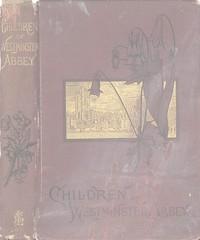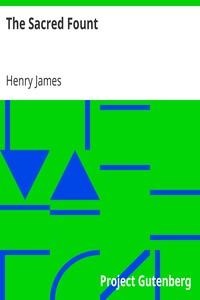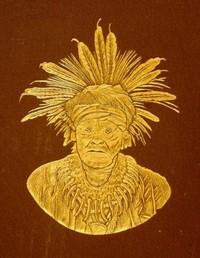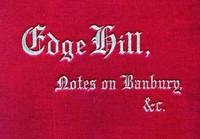Read this ebook for free! No credit card needed, absolutely nothing to pay.
Words: 46497 in 15 pages
This is an ebook sharing website. You can read the uploaded ebooks for free here. No credit cards needed, nothing to pay. If you want to own a digital copy of the ebook, or want to read offline with your favorite ebook-reader, then you can choose to buy and download the ebook.


: The Children of Westminster Abbey: Studies in English History by Kingsley Rose Georgina - Westminster Abbey Biography; Children England London
up with an important event in the history of Great Britain.
Yet first, for the sake of those who have not been to Westminster, I will try to explain the general plan of the eastern end of the Abbey. Imagine a narrow horseshoe of which the points are straight instead of being bent inwards. The space inside the horseshoe represents Edward the Confessor's Chapel; the shoe itself the ambulatory, a wide passage where the monks used to walk, and processions passed round to the shrine; and outside this passage are built, on the south the chapels of St. Edmund, and St. Nicholas; on the north the chapels of St. Paul and St. John the Baptist; while on the east of the horseshoe curve are the steps up to Henry the Seventh's Chapel. These chapels all lie behind the grand screen that runs right across the choir at the back of the altar, and are not used for service any longer, with the exception of Henry the Seventh's. All the congregation sit in the choir in front of the altar rails, and in the north and south transepts, which spread out right and left from the choir like two broad arms of a cross.
I know few more overpowering sights than the vast Sunday congregation of between three and four thousand people. The Sacrarium black with men. The wide altar steps closely packed with people who have often been waiting for more than an hour outside the doors to secure a good place. Men and women and children wedged together in the densely crowded transepts, standing willingly throughout the long service because there is not a seat left. The privileged few coming in by the comparatively empty nave from the cloisters, and taking their places in the stalls or in the seats of those connected with the Abbey; well-known faces there are among them--princes and statesmen, men of letters and foreigners of note. Then the hush as the clock strikes three in Poets' Corner, and a faint harmonious "amen" is sung in the distant Baptistery by the choir, at the end of the prayer which is always said before they come in to service. The organ plays softly, so softly that you hear the echoing tramp of the long procession now winding up the nave. Six or eight pensioners, old soldiers in quaint blue cloth gowns and silver badges, enter and take their places. And as the white-surpliced boys appear in the black shadow of the gateway under the organ screen, the whole three thousand people rise quietly to their feet and stand. First come the boys of Westminster School with their masters, and take their places right and left. Then the little chorister boys, walking two and two, the smallest in front--little mites who look as if they would hardly know their letters, but who march gravely to their seats, and sing the long service like sweet-voiced little birds. Then the "singing gentlemen of Westminster Abbey," as the men in the choir are called--many of them well-known professionals, whose names are seen during the week at the best concerts in England. Then come the clergy. The minor Canons first who intone the service. Next to them the Canon in residence, who, during his two months at Westminster, is present at every service week-day and Sunday. And last of all the Dean.
After the Dean has gone into his stall on the right of the entrance, the service begins. The monotone of the prayers breaks into rich harmonies now and again at the responses--the organ re-echoes through the arches and pillars with thundering of the pedals, and wild, pathetic reed-notes. The splendid voices of the choir fill the building from end to end in the Psalms and canticles; or a boy's voice, singing a solo verse, floats up quivering and throbbing like a nightingale's song in a still wood at evening. And then--but I am speaking of "the days that are no more"--a small figure--unutterably dignified, with a pale, refined, determined face--in his white robes, his scarlet Doctor of Divinity's hood, and the crimson ribbon of the Order of the Bath with its golden jewel round his neck--followed the black-robed verger who carried a silver mace, up from the stalls, through the two walls of human beings, to the marble pulpit just outside the altar rails. And every face turned with eager expectation towards the bowed head, and hung breathless on the eloquent words that rang like a clarion through the great church; for it was Arthur Stanley, Dean of Westminster, who was preaching.
But we are lingering in the choir, full, to us who know and love it, of such keen present interest. I must take you back into the Confessor's Chapel and the remote past.
We go through the iron gates that shut off the chapels from the choir, and climb the steps out of the ambulatory, for the Confessor's Chapel is raised several feet above the pavement of the Abbey. It lies, as I have said, directly behind the altar, only divided from it by the splendid screen which was erected early in the fifteenth century. This screen on the western side has been beautified and restored, and forms the reredos to the altar. But in the Chapel its eastern face is untouched; and, if you have patience to trace out the quaint carvings along the top, you will find they are a history of some of the miraculous and wonderful events of Edward the Confessor's life; the Seven Sleepers of Ephesus; St. John giving the ring to the Pilgrims; the quarrel between Tosti and Harold, Earl Godwin's sons, when the king predicted the calamities they would bring in after years upon England; and many more scenes of like nature.
Below the screen, which is wrought with exquisite carving into niches and canopies, stands a curious old chair. This is the Coronation Chair, in which all English sovereigns have sat at their coronations since it was made in Edward the First's reign. But more curious than the chair is the rough block of stone which it incases. That block is the mysterious stone of Fate which Edward the First captured at Scone in Scotland--the stone on which every Scotch king had been crowned from the days of Fergus the First--the stone on which every English king or queen has been crowned since. And legends carry the history of that stone back into the remotest past. They say that it was the stone pillow on which Jacob slept at Bethel; that it was carried by the Jews into Egypt; that the son of Cecrops, King of Athens, carried it off to Sicily or Spain; that from Spain it was taken by Simon Brech, the son of Milo the Scot, to Ireland, where after many marvelous adventures it was set up on the sacred Hill of Tara as the "Lia Fail" or Stone of Destiny; and that Fergus, the founder of the Scottish monarchy, bore it at length across the sea to Dunstaffnage.
Whether we believe the whole history of the Stone of Destiny or not, the chapel in which it stands is a wonderful place. In the centre rises the Confessor's shrine, the remains of the mosaics with which it was encrusted showing what its splendor must have been. The mosaic pavement of 1260 is under our feet. Henry the Fifth's shield and helmet hang aloft on a bar above his chantry. All round us are the splendid monuments of the kings. Richard the Second, Edward the Third and Queen Phillipa, Henry the Fifth under his beautiful chantry, Henry the Third in his gorgeous tomb inlaid with marbles and mosaic, Good Queen Eleanor, and her husband Edward the First--they all are there! "The greatest of the Plantagenets," as he has been called, lies beneath an enormous monument of solid gray stone, absolutely plain, without carving, brass or mosaic. Only his gigantic two-handed sword lies upon it, and along it runs this inscription:
It is of Edward the First's reign we are to talk. For besides being the Hammer of the Scots, he conquered the last stronghold of the British race, and made their land forever a part of England.
For four hundred years Wales had been a thorn in the sides of the Saxon kings, a thorn in the sides of the Norman Conquerors and their descendants. The Britons, driven westward by the all-conquering Anglo-Saxons, had taken refuge in the fastnesses of that wild and mountainous region. There they had lived, "a mass of savage herdsmen, clad in the skins and fed by the milk of the cattle they tended, faithless, greedy, and revengeful." Every fresh earldom which the English had wrested from them, often with barbarous injustice and cruelty, had been the signal for some equally barbarous reprisal. The history of the border countries is one perpetual record of raids and fightings, of lands laid waste with fire and sword, flocks and herds driven off, women and children carried into captivity.
But in Henry the Second's reign, just as the British race seemed sinking deeper and deeper into barbarism, a strange revival of patriotism took place. The Bards of Britain, for centuries silent, suddenly burst into song again. The praise of every British hero, the glory of every fight, was sung throughout the land; and the sound of the harp heard in every house. These singers of freedom chanted of joy in battle, of their country's liberty, of hatred of the Saxon oppressor. And they sang of their great prince, Llewellyn, "towering above the rest of men with his long red lance, his red helmet of battle crested with a fierce wolf; tender-hearted, wise, witty, ingenious." Wales, stirred by their trumpet calls, had soon burst aflame to drive the Saxon from the land.
With a succession of victories for the Welsh prince, Llewellyn--the Lord of Snowdon--the hopes of his people had risen high. The dissensions of Henry the Third's reign had strengthened their hands. Llewellyn the younger, no longer calling himself Lord of Snowdon, but "Prince of Wales," had made himself sovereign of all the Welsh chieftains, and had also allied himself with Simon de Montfort during the great earl's revolt against the king.
Free books android app tbrJar TBR JAR Read Free books online gutenberg
More posts by @FreeBooks

: The Sacred Fount by James Henry - Psychological fiction; Married people England Fiction; Man-woman relationships England Fiction


: First Annual Report of the Bureau of Ethnology to the Secretary of the Smithsonian Institution 1879-1880 Government Printing Office 1881 by Dorsey James Owen Contributor Gatschet Albert S Albert Samuel Contributor Holden Edward S Edward Singleton Contribu






